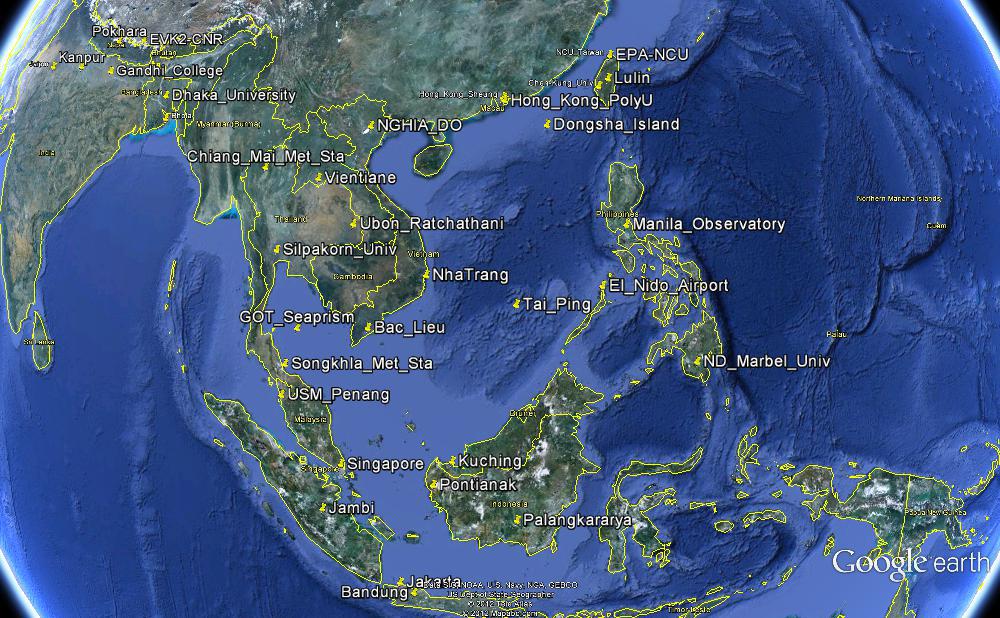The 7-SEAS mission deployments (Figure 1) of sun/sky radiometers will occur in Bangladesh, Indonesia, Malaysia, and Philippines from June 15 to at least October 1, 2012. These sites will augment those already deployed in the region in the countries of Indonesia, Laos, Malaysia, Nepal, Taiwan, Thailand, Philippines, and Vietnam.
DRAGON-Southeast Asia instrument deployments will occur in and around the island of Penang, Malaysia (Figure 2) and within Singapore (Figure 3) with approximately five regionally distributed instruments in each location.

Figure 1. 7-SEAS Site Distribution Download KMZ file.

Figure 2. DRAGON-Penang Site Distribution Download KMZ file.

Figure 3. DRAGON-Singapore Site Distribution Download KMZ file.
7-SEAS/DRAGON Text Lists
+ Level 1.0 AOD Data (TXT)
+ Level 1.5 AOD Data (TXT)
+ Level 2.0 AOD Data (TXT)
7-SEAS/DRAGON Google Earth Distribution
+ Level 1.0 AOD Data (Google Earth KMZ)
+ Level 1.5 AOD Data (Google Earth KMZ)
+ Level 2.0 AOD Data (Google Earth KMZ)
|